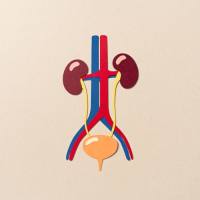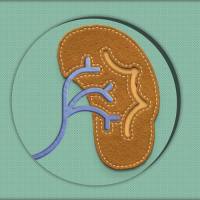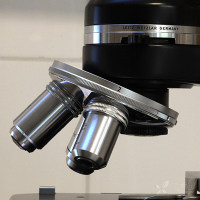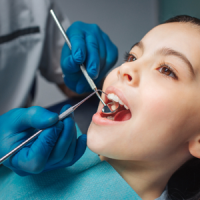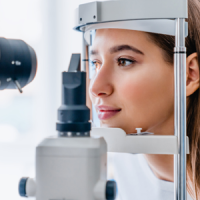【女性生殖系统菌群之二】阴道真菌、病毒以及宫颈菌群
1. 阴道中细菌、真菌和病毒
关于健康阴道中存在细菌以外的微生物鲜有报道。在一项对216名健康PMPM个体的研究中,发现了194个真菌OTUs,其中念珠菌属最常见,并且测序序列的比例最大(图1)。在念珠菌属中,82%被鉴定为白色念珠菌。

图1 216名健康PMPM女性阴道真菌非培养学分析
从健康人阴道或FRS其他区域采集的样本中似乎没有发现原生动物或古细菌的报道。
2. 在宫颈可培养菌群中乳酸菌(lactobacilli)占主导地位
宫颈可培养菌群与阴道类似,乳酸杆菌是最常见的可培养菌种,而棒状杆菌、葡萄球菌、链球菌和GPAC也经常被培养,平均而言,约有六种细菌,主要以微菌落形式存在于粘液层或附着于粘膜表面。
大多数研究都是针对PMPM女性进行,对于月经初潮前或绝经后女性的宫颈菌群知之甚少。在PMPM女性中,乳酸杆菌是最常见的分离物种,在菌群中所占比最高。
3. 在宫颈菌群中发现了许多群落类型
正如在阴道中与非培养的研究得出结论一样,PMPM女性中可以观测出许多群落类型,包括乳酸杆菌(L.iners、L.crispatus和L.gasseri)占优势的群落类型,以及乳酸杆菌不占优势的群落类型。不以乳酸杆菌为主的群落类型包括三类:(1)几乎完全由G. vaginalis组成;(2)由厌氧菌属的混合物组成,包括普氏菌属、小杆菌属、奇异菌属、加德纳杆菌属、巨球菌属、嗜胨菌属、纤毛菌属、埃格特菌属、气球菌属、芬戈尔德菌属和动弯杆菌属;(3)阴道毛滴虫和乳酸杆菌的比例大致相等。
在部分女性中,相同的群落类型会持续很长时间,而在另一些女性中,群落类型之间会发生波动。最常见的波动是在以L.iners为主的群落和以G.vaginalis为主的群落之间。
4. 妊娠期间宫颈菌群的变化
妊娠对宫颈可培养菌群有显著影响。从孕早期到孕晚期,GPAC、脆弱拟杆菌和其他类杆菌等厌氧菌的可分离频率逐渐降低。厌氧菌分离减少可能是妊娠期间宫颈血管增多的结果,因为这将向组织输送更多氧气,从而产生更多需氧菌抑制专性厌氧菌生长。
女性生殖系统菌群系列:
【女性生殖系统菌群之二】生殖系统菌群受年龄和系统生理学变化的影响
参考文献
Brown CJ, Wong M, Davis CC et al. (2007). Preliminary characterization of the normal microbiota of the human vulva using cultivation-independent methods. J Med Microbiol 56:271–276.
Cicinelli E, Ballini A, Marinaccio M et al. (2012). Microbiological findings in endometrial specimen: our experience. Arch Gynecol Obstet 285:1325–1329.
Drell T, Lillsaar T, Tummeleht L et al. (2013). Characterization of the vaginal micro-and mycobiome in asymptomatic reproductive-age Estonian women. PLOS ONE 8:e54379.
Fettweis JM, Serrano MG, Girerd PH et al. (2012). A new era of the vaginal microbiome: advances using next-generation sequencing. Chem Biodivers 9:965–976.
Hickey RJ, Zhou X, Pierson JD et al. (2012). Understanding vaginal microbiome complexity from an ecological perspective. Transl Res 160:267–282.
Hickey RJ, Zhou X, Settles ML et al. (2015). Vaginal microbiota of adolescent girls prior to the onset of menarche resemble those of reproductive-age women. MBio 6 pii:e00097–15.
Huang B, Fettweis JM, Brooks JP et al. (2014). The changing landscape of the vaginal microbiome. Clin Lab Med 34:747–761.
Lamont RF, Sobel JD, Akins RA et al. (2011). The vaginal microbiome: new information about genital tract flora using molecular based techniques. BJOG 118:533–549.
Martin DH & Marrazzo JM (2016). The vaginal microbiome: current understanding and future directions. J Infect Dis 214(Suppl 1): S36–S41.
McGuire MK & McGuire MA (2016). Got bacteria? The astounding, yet not-so-surprising, microbiome of human milk. Curr Opin Biotechnol 44:63–68.
Mendling W (2016).Vaginal Microbiota. Adv Exp Med Biol 902: 83–93.
Mitchell CM, Haick A, Nkwopara E et al. (2015). Colonization of the upper genital tract by vaginal bacterial species in nonpregnant women. Am J Obstet Gynecol 212:611.e1-9.
Miyamoto T, Akiba S, Sato N et al. (2013). Study of the vulvar skin in healthy Japanese women: components of the stratum corneum and microbes. Int J Dermatol 52:1500–1505.
Muhleisen AL & Herbst-Kralovetz MM (2016). Menopause and the vaginal microbiome. Maturitas 91:42–50. Prince AL, Chu DM, Seferovic MD et al. (2015). The perinatal micro-biome and pregnancy: moving beyond the vaginal micro-biome. Cold Spring Harb Perspect Med 5 pii:a02305.
Rampersaud R, Randis TM & Ratner AJ (2012). Microbiota of the upper and lower genital tract. Semin Fetal Neonatal Med 17: 51–57.
Shiraishi T, Fukuda K, Morotomi N et al. (2011). Influence of menstruation on the microbiota of healthy women’s labia minora as analyzed using a 16S rRNA gene-based clone library method. Jpn J Infect Dis 64:76–80.
van de Wijgert JH, Borgdorff H, Verhelst R et al. (2014). The vaginal microbiota: what have we learned after a decade of molecular characterization? PLOS ONE 9:e105998.
Wassenaar TM & Panigrahi P (2014). Is a foetus developing in a sterile environment? Lett Appl Microbiol 59:572–579.








